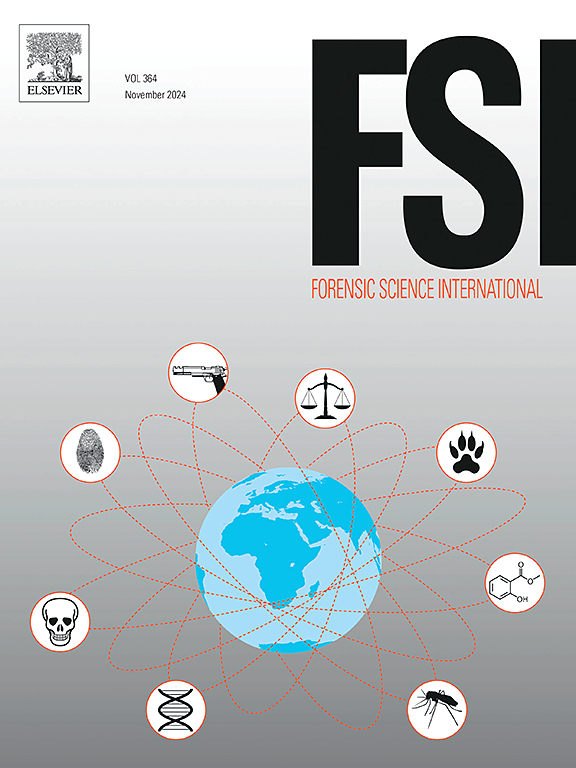Computational forensic identification of deceased using 3D bone segmentation and registration
IF 2.2
3区 医学
Q1 MEDICINE, LEGAL
引用次数: 0
Abstract
The identification of deceased with unknown identity is a key task in forensic investigations. Current radiologic identification approaches are often elaborative, lack statistical evidence, and are dependent on the examiner’s experience and expertise. Thus, the aim of this work was to develop a 3D computational and thus, more objective identification approach. An anonymised antemortem (AM) dataset consisting of 90 computed tomography (CT) scans containing the sternal bone and the fifth thoracic (T5) vertebra, as well as an anonymised postmortem (PM) dataset consisting of 40 CT scans containing the sternal bone and the T5 vertebra were included in this work. The PM data had corresponding AM data within the AM dataset. A custom-made python script was established to automatically perform 3D segmentation of the sternal bones and the T5 vertebrae, respectively, and to register the AM data to the PM data. The similarity between the registered AM data and the PM data was assessed via the Dice coefficient. The highest Dice score was intended to indicate a match. An accuracy of 86.7 % was achieved for the sternal bone, and 88.9 % for the T5 vertebra, respectively. In some cases, insufficient CT quality and altered bone morphology due to surgical interventions hindered correct matching. However, by combining the sternal bone and T5 vertebra for identification, the accuracy was increased to 97.8 %. Hence, the presented tool seems to be a promising 3D computational approach for objective identification of unknown deceased, which could be further adapted for other bone structures. The final tool is publicly available.
求助全文
约1分钟内获得全文
求助全文
来源期刊

Forensic science international
医学-医学:法
CiteScore
5.00
自引率
9.10%
发文量
285
审稿时长
49 days
期刊介绍:
Forensic Science International is the flagship journal in the prestigious Forensic Science International family, publishing the most innovative, cutting-edge, and influential contributions across the forensic sciences. Fields include: forensic pathology and histochemistry, chemistry, biochemistry and toxicology, biology, serology, odontology, psychiatry, anthropology, digital forensics, the physical sciences, firearms, and document examination, as well as investigations of value to public health in its broadest sense, and the important marginal area where science and medicine interact with the law.
The journal publishes:
Case Reports
Commentaries
Letters to the Editor
Original Research Papers (Regular Papers)
Rapid Communications
Review Articles
Technical Notes.
 求助内容:
求助内容: 应助结果提醒方式:
应助结果提醒方式:


